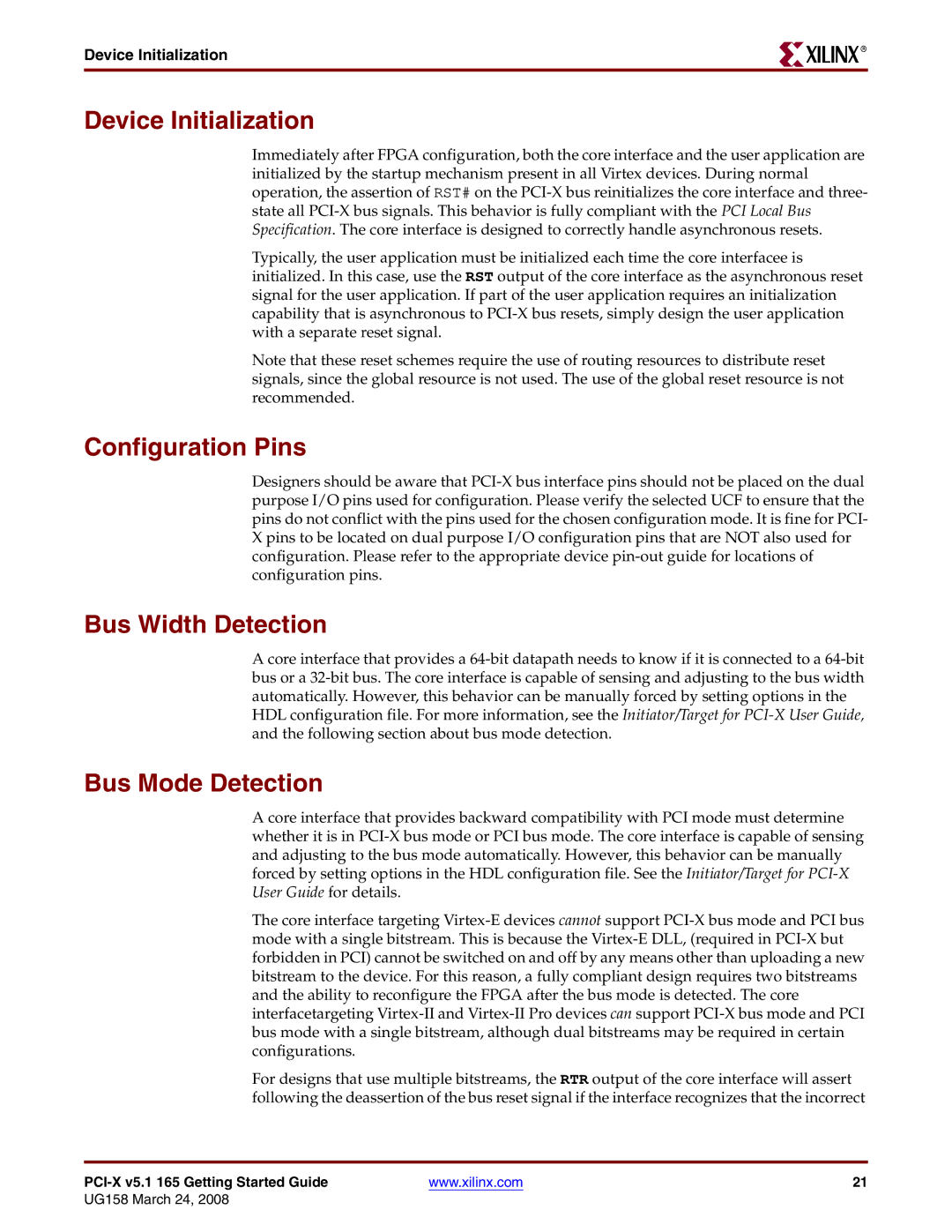Device Initialization
Immediately after FPGA configuration, both the core interface and the user application are initialized by the startup mechanism present in all Virtex devices. During normal operation, the assertion of RST# on the PCI-X bus reinitializes the core interface and three- state all PCI-X bus signals. This behavior is fully compliant with the PCI Local Bus Specification. The core interface is designed to correctly handle asynchronous resets.
Typically, the user application must be initialized each time the core interfacee is initialized. In this case, use the RST output of the core interface as the asynchronous reset signal for the user application. If part of the user application requires an initialization capability that is asynchronous to PCI-X bus resets, simply design the user application with a separate reset signal.
Note that these reset schemes require the use of routing resources to distribute reset signals, since the global resource is not used. The use of the global reset resource is not recommended.
Configuration Pins
Designers should be aware that PCI-X bus interface pins should not be placed on the dual purpose I/O pins used for configuration. Please verify the selected UCF to ensure that the pins do not conflict with the pins used for the chosen configuration mode. It is fine for PCI- X pins to be located on dual purpose I/O configuration pins that are NOT also used for configuration. Please refer to the appropriate device pin-out guide for locations of configuration pins.
Bus Width Detection
A core interface that provides a 64-bit datapath needs to know if it is connected to a 64-bit bus or a 32-bit bus. The core interface is capable of sensing and adjusting to the bus width automatically. However, this behavior can be manually forced by setting options in the HDL configuration file. For more information, see the Initiator/Target for PCI-X User Guide, and the following section about bus mode detection.
Bus Mode Detection
A core interface that provides backward compatibility with PCI mode must determine whether it is in PCI-X bus mode or PCI bus mode. The core interface is capable of sensing and adjusting to the bus mode automatically. However, this behavior can be manually forced by setting options in the HDL configuration file. See the Initiator/Target for PCI-X User Guide for details.
The core interface targeting Virtex-E devices cannot support PCI-X bus mode and PCI bus mode with a single bitstream. This is because the Virtex-E DLL, (required in PCI-X but forbidden in PCI) cannot be switched on and off by any means other than uploading a new bitstream to the device. For this reason, a fully compliant design requires two bitstreams and the ability to reconfigure the FPGA after the bus mode is detected. The core interfacetargeting Virtex-II and Virtex-II Pro devices can support PCI-X bus mode and PCI bus mode with a single bitstream, although dual bitstreams may be required in certain configurations.
For designs that use multiple bitstreams, the RTR output of the core interface will assert following the deassertion of the bus reset signal if the interface recognizes that the incorrect
PCI-X v5.1 165 Getting Started Guide | www.xilinx.com | 21 |
UG158 March 24, 2008

